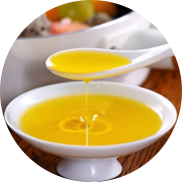153-0373-2222
138-3908-0089
The production of rapeseed oil using the extraction method is as follows:
Rapeseed Oil Extraction Method
Rapeseed oil extraction is based on the principle of extraction, where an organic solvent capable of dissolving oil is selected and brought into contact with the oilseed after pretreatment—either through immersion or spraying. This allows the oil to be dissolved from the oilseed. The method forms a solution of solvent and the dissolved oil, known as mixed oil. By utilizing the difference in boiling points between the selected solvent and the oil, the mixed oil is evaporated and stripped to evaporate the solvent, leaving behind the oil, resulting in crude oil. The evaporated solvent steam is then condensed and recovered for reuse.
Advantages of Extraction Method
The extraction method for oil production is recognized worldwide and can be summarized with the following advantages:
1. Low residual oil in meal
In the pressing method, due to the incomplete destruction of oil cells in the pretreatment process and the incomplete denaturation of proteins, the temperature and pressure in the press chamber cannot be very high. As a result, the pressing method cannot extract all the oil from the oilseed, and the residual oil rate in the press cake is relatively high. For example, the residual oil rate in the press cake obtained from various oilseeds pressed by the ZX·18 type press is generally between 5% and 8%. In contrast, the extraction method, whether direct extraction or pre-pressing extraction, can control the residual oil rate in the meal after extraction below 1%.
2. High meal quality
Compared to the pressing method, in the production of rapeseed oil using the extraction method, the operation temperature of related processes is generally lower, resulting in less denaturation of proteins in the solid material. Consequently, the quality of the meal is better, which is advantageous for the feeding value of the meal or for extracting plant proteins from the meal.
3. Low production cost
Compared to the pressing method, the extraction method typically uses a more complete production line with a higher degree of mechanization and is easier to achieve production automation. Secondly, the operation personnel in the extraction workshop are fewer, with lower labor intensity. Additionally, the energy consumption in the extraction method is relatively lower. Therefore, the production cost of the extraction method is lower.



























































